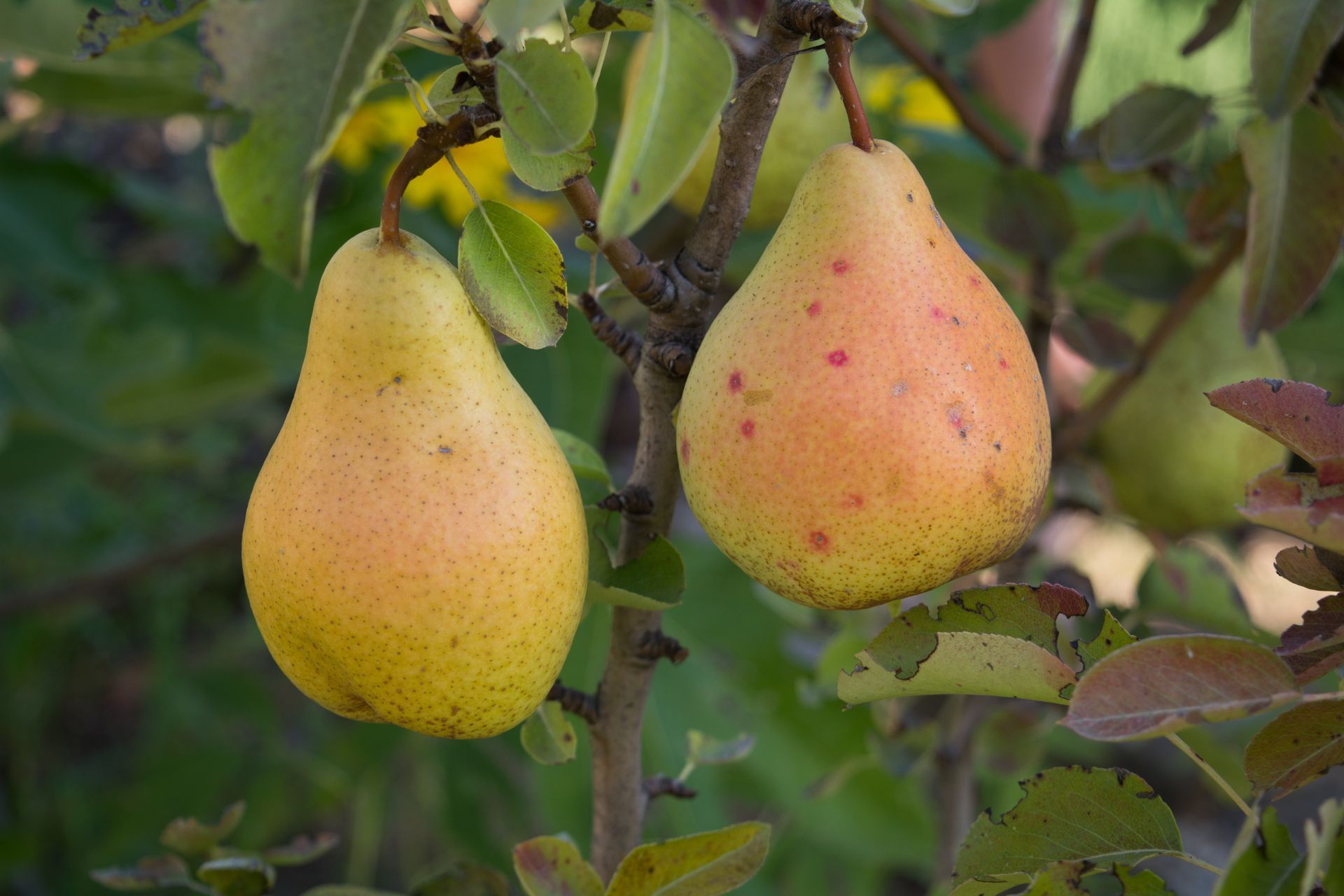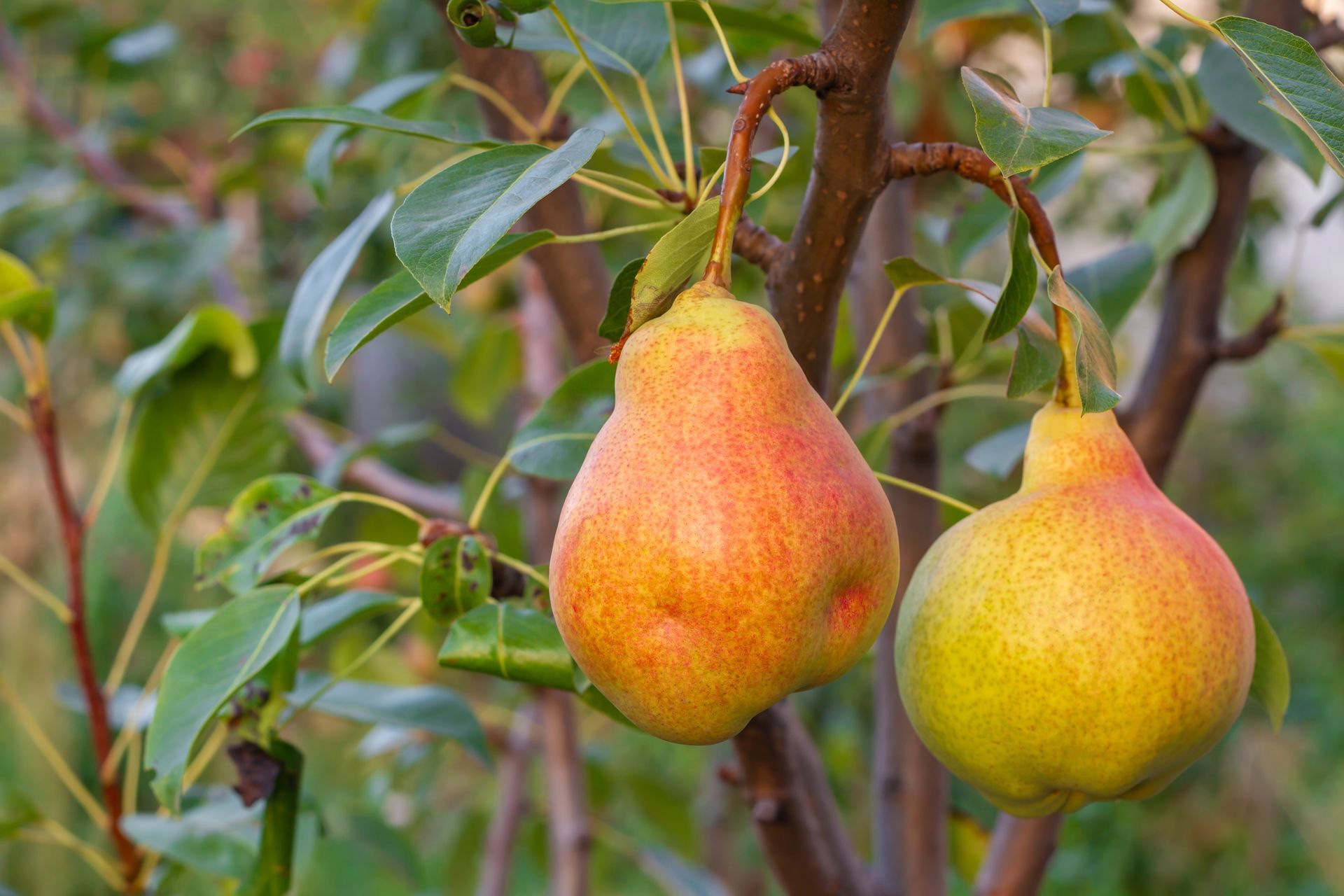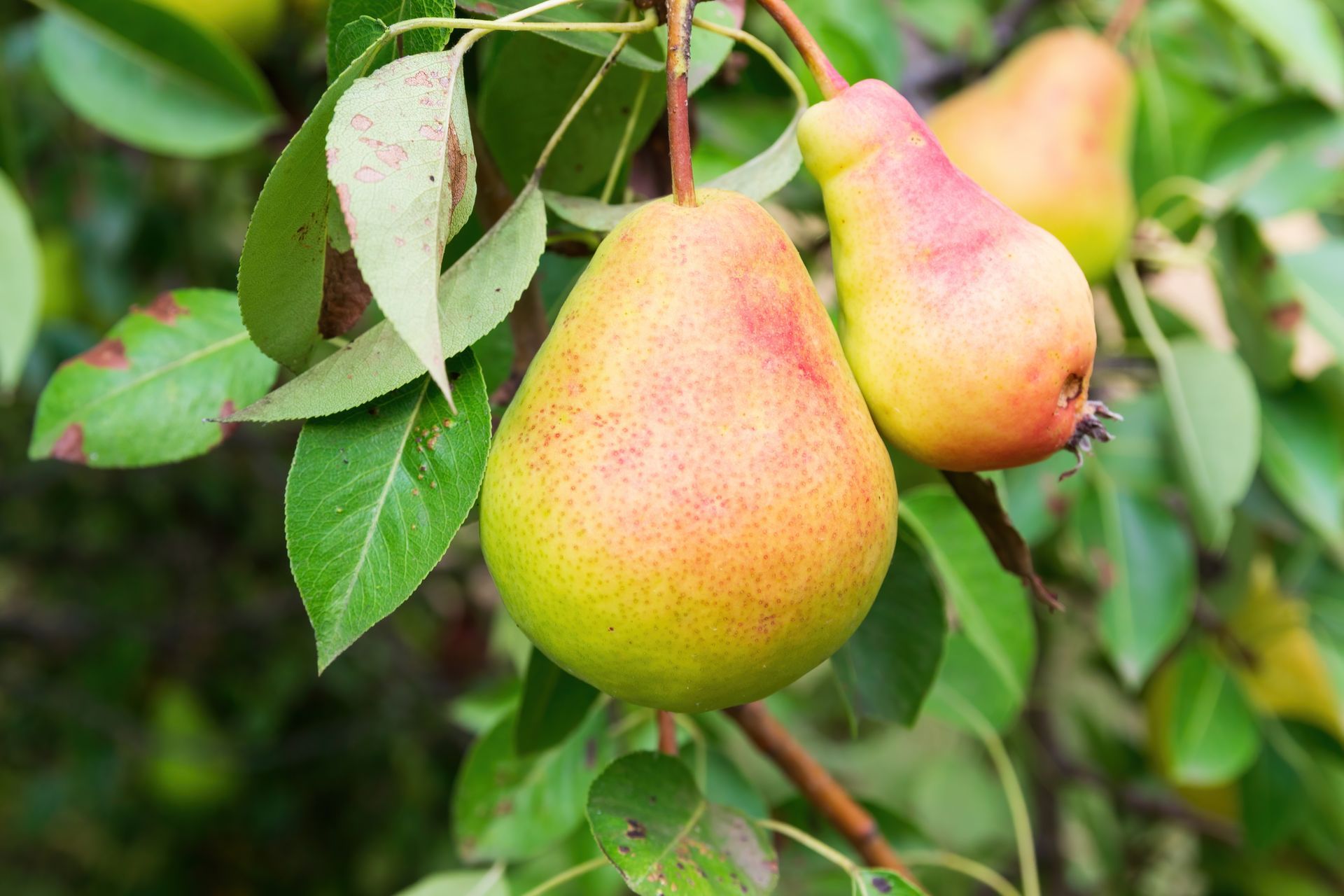Pear, Luscious
Pear, Luscious
Pyrus 'Luscious', an exceptional pear variety developed at South Dakota State University's breeding program specifically for northern climates, thrives in Zone 4-7 regions making it well-suited for most North Dakota landscapes. This celebrated cultivar resulted from a cross between 'Ewart' and 'M-3' pears, inheriting superior cold hardiness while producing dessert-quality fruits with exceptional flavor. The tree develops a naturally well-structured form with upright-spreading branches, reaching 15-18 feet in height and width at maturity while demonstrating good resistance to both fire blight and iron chlorosis. Luscious pears typically reach harvest maturity in late September, when the medium to large fruits (averaging 3 inches in diameter) develop a clear yellow skin sometimes brushed with a pale red blush on the sun-exposed side. Unlike many cold-hardy pears that sacrifice quality for resilience, Luscious offers truly gourmet characteristics with flavor remarkably similar to the classic Bartlett pear – rich, sweet, and aromatic with perfectly balanced juiciness and minimal grittiness. The distinctive flesh texture is perhaps its most celebrated quality – firm enough to maintain integrity when sliced or baked, yet offering that coveted "melting" quality where it becomes buttery-smooth when perfectly ripened. Proper harvesting technique significantly impacts quality; fruits should be picked when mature but still firm, then refrigerated for 2-3 weeks before ripening at room temperature until yielding slightly to gentle pressure at the stem end. As a triploid variety with three sets of chromosomes, Luscious has a genetic characteristic requiring special attention – it cannot produce viable pollen and absolutely requires two different compatible pear varieties nearby for successful pollination and fruit production. Optimal pollination partners include Parker, Kieffer, and/or Summer Crisp, which must be planted within approximately 100 feet to ensure reliable fruit set. This genetic feature, while requiring additional planning, ensures diversity in northern orchards while delivering a truly exceptional dessert pear that combines gourmet quality with prairie-proven hardiness.






